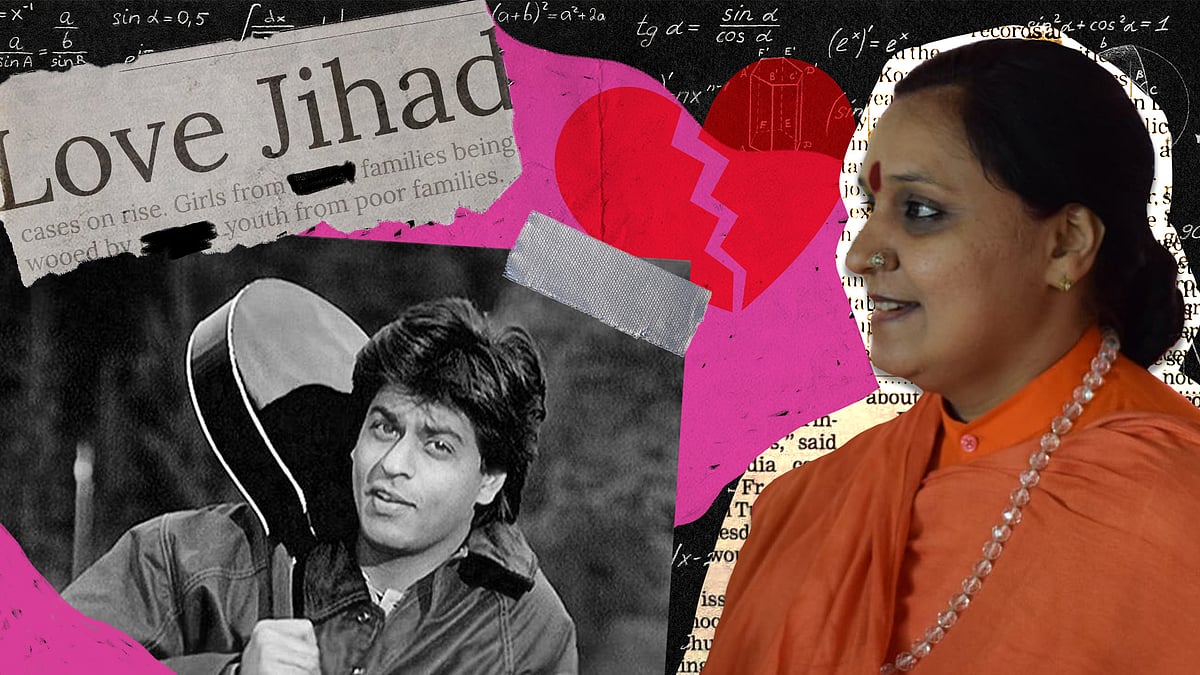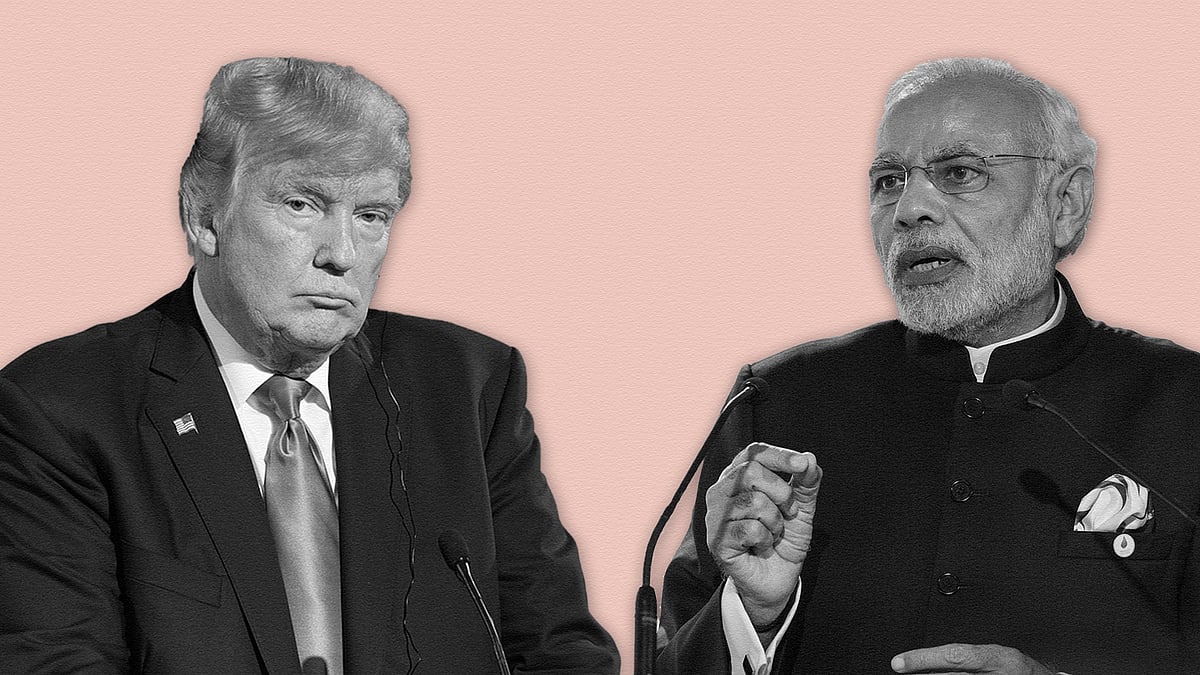How a pliant media enables the rise of authoritarianism
In the post-truth era, Indian TV news channels have slowly turned into an extension of the state.
“Highlight how the Duce wasn’t at all tired after threshing for four hours,” reads one of the veline. Some others go: “Never care about anything concerning Einstein”, “Do not mention in today’s reporting the ballet the Duce attended in Belluno.”
The Italian word veline means tissue paper but during the rule of Benito Mussolini’s fascist party, it had acquired another meaning. The fascists would send veline to the press, as guidelines through their ministry of popular culture. Initially, these veline were used as suggestions about what should or shouldn’t be discussed, while also providing recommendations on stylistic elements, tone, choice of words, and occasionally grammar. Over time, these suggestions became directives on news to cover, the ways to cover them, words to use (no foreign words), on how women should be discussed and portrayed. Velines created an Italy that neither existed in reality nor in common sense, but that was always the plan. Controlling information and curating it to fit propaganda was at the core of Mussolini’s rule. After all, Mussolini had been a journalist before he became Il Duce, the leader.
After the First World War, Italy was desperate for an inspirational messianic figure who could take the country to glory and Mussolini stepped in capturing that fear, anxiety and anger to become that leader-dictator.
The news media in post-war Italy was not seen as adversarial but as an extension of the state. Journalists were encouraged to see their occupation as a form of service to the nation and leader. Mussolini established a high commission for press, maintaining that it would not interfere with the freedom of press, except for “any activity contrary to national interest” and “faithfulness to the Fatherland”. Stories about Mussolini racing (and winning) against boats, working 18-hour days, and guiding Italy to have the world’s most powerful arsenal kept being published.
Authoritarianism and media’s complicity
The story of the media’s compliance under Mussolini isn’t much different from how it was used in Germany at the same time. Similarly, in the Soviet Union, collectivisation farming efforts under Joseph Stalin resulted in five million deaths from famine and Mao Zedong’s Great Leap Forward in China ended up killing an estimated 45 million people. Both were never officially acknowledged by the regimes and their media played along, enabling the leader.
All authoritarians invested in shaping a favorable reality for themselves start by attacking the media’s legitimacy. In turn, the media in more stable democracies, like the US, usually react against it, but in weaker ones, they try to slide into the good books of the authoritarian. In more timid societies, predisposed to authoritarian tendencies, the media starts participating willfully in what they see as nation-building out of the sheer faith they have invested in the leader like in pre-war Italy, or modern Brazil, Pakistan under Zia-ul-Haq, and now in India.
This manipulation and capitulation of media helps these leaders maintain their aura of invincibility. Just like Mussolini, Hitler had a whole propaganda ministry dedicated to this. In recent times, both in the US under Donald Trump and India under Narendra Modi, Fox News and a number of Indian news channels have worked to amplify the lies of the leader until they start to feel like the truth. Remember, despite the 100 deaths attributed to demonetisation, an economic catastrophe has essentially been erased from our minds.
Early days, when Indian media made alien’s drink cow milk
“Twenty four-hour news networks are built for one thing, and that is 9/11. There are very few events that would justify being covered 24 hours a day, seven days a week. So, in the absence of urgency, they have to create it. You create urgency through conflict,” said the American comedian and commentator Jon Stewart.
When it comes to India, no one has benefited as much from the media’s proclivity toward creating vacuous conflicts as the prime minister. For a democratic state, the number of internet shutdowns and clamping on dissent is embarrassing and scary. Unlike Mussolini, who was content to be seen as not tiring after threshing for four hours, Modi’s media has stretched it to an 18-hour workday; Rubika Liaqat in an interview simply asked him if he ever gets tired at all.
Amid growing competition among 24-hour news channels, the lines between truth and manufactured truth, news and entertainment were being erased even before Modi. Rajat Sharma’s India TV was the pioneer of the “aliens are drinking cow milk” news trope which most other Hindi news channels incorporated soon enough. During the 2008 Mumbai terrorist attack, India TV did an almost hour-long segment on a purported phone call from one of the terrorists inside the Oberoi Hotel, so in hindsight it was pretty obvious the path Indian media was on. All this did not outright enable fascistic forces but did create an environment where the lines between what was real news and what was entertainment eroded. So, even before the media became a tool of propaganda for the current regime, it had already created for itself a fertile ground to be co-opted by such forces.
Around the end of UPA II, both the India Against Corruption campaign and the 2012 Delhi rape and murder case provided a template for the media to follow where news could be presented as opinion and the media could take a position instead of doling out the boring details. Arnab Goswami mastered the art of channeling anger of the middle class, which in India converges with the Hindu upper castes, by packaging news as entertainment.
2012 and the new Indian Media
If we ever have to do a before and after of the Indian media story, the Delhi rape and murder would be that. The nation was going through a moment of collective anger, candlelight vigils were being held. Abhijit Mukherjee, the son of President Pranab Mukherjee, in a public statement, derided the protesting women, calling them “dented and painted”. This led to perhaps the first viral news moment of India, when Goswami, on his prime time show, went on an angry rant scolding Mukherjee. It was perhaps then that he had an epiphany that anger sells, especially if you are seen channeling the anger of the common citizen against the establishment.
Until June 2015, Goswami was somewhat bipartisan in his brashness presented as news and would still criticise the BJP, though not Modi. Then came the “investigation” into the Lalit Modi case on Times Now, where he then worked. Lalitgate is where the tide seemed to have turned for him. Goswami was still as angry afterwards but his coverage began to blatantly favour the government.
Over time, impersonators propped on the scene, starting with his replacements at Times Now. While the actual value of pro-government opinion-based news programmes delivering ratings can still be doubted, it is safe to say that staying in sync with the powers that be keeps the media houses safer from any undesirable scrutiny. It isn’t coincidental that some of the main advertisers of Republic TV and Republic Bharat are companies that cater to the urban middle class. The class that is on the better side of the unequal income divide in India. A group that controls most structures of powers and has aligned itself to Modi and believes in both the mythical glory of the past and the transformative power of its future if only others do not come in the way, or better just serve them dutifully.
Origins of totalitarianism
Hannah Arendt in Origins of Totalitarianism says, “Ideal subject of totalitarian rule is not convinced Nazi or convinced Communist, but people for whom distinction between fact and fiction (i.e., the reality of experience) and distinction between true and false (i.e., the standards of thought) no longer exist.”
As India Today’s latest survey seems to show, even amid a pandemic, protests, economic downturn, and rising prices, Modi still has high favorability with Indians. A decade and a half ago, his predecessor Atal Bihari Vajpayee’s government fell to what was then claimed a mismanaged PR disaster of “India Shining”, when people at the ground did not feel that purported PR in reality. So, what has changed now? The media has, and so has the truth. As TV channels ran news accusing everyone but the government, altered truth to fit their narrative from Tablighi Jamaat on Covid to calling the farmer protesters Khalistani, they enabled the leader to tighten his grip over his people, hence the popularity. At the time of the Ayodhya temple inauguration, a viral cartoon image appeared of Modi walking Lord Ram into his temple – it was particularly fascinating to notice as it showed Modi as the bigger personality, a guardian to the smaller childlike version of Ram. This was nothing but the power of suggestions coloring your perception of the strongman as godlike.
German scholar Victor Klemperer noted, “Under totalitarian regimes truth is replaced by misplaced faith in the leader” who says things like, “I alone can solve it”. What terrified Klemperer even more was the way this transition seemed permanent. Even at the end of the world war a worker told Klemperer, “Understanding is useless, you have to have faith. I believe in the Führer”.
‘Post-truth is pre-fascism’
Federico Finchelstein, a professor of populism and fascism, wrote in A Brief History of Fascist Lies, “The attachment to the leader’s ‘truth’ seems so secure that it transcends ethics and common sense and justifies his most offensive and apparently illegal acts.”
In the Indian media, stunning claims are made and forgotten in a moment (GPS chips in currency notes, demonetisation removing black money). Speaking objective falsehoods does not dent one’s credibility (Sudhir Chaudhary and Shweta Singh are still celebrated voices). The media keeps amplifying the party line and attacks anyone in opposition to it with might or ridicule.
As the regime controls the media, the media slowly fuses into the regime. Just like the government, the media never apologises or even acknowledges a mistake, whether it be demonetisation, or blaming one religious group for Covid, not acknowledging the migrant crisis, the Galawan skirmishes and deaths, the cow protection lynchings, or the ongoing farmer protests. Anyone who points a finger at your conduct is painted as someone who was never part of the in-group, anyone who is against the BJP and, more importantly, Modi becomes an anti-national or western puppet, from Rihanna to Greta Thunburg to comedians.
What is happening in India is not new and has a historical precedent. It almost sounds cliched to evoke the stories of Germany and Italy and how muzzling and manipulating media has ended up harming not just the media but truth and society. But the more media sides with the authoritarian, more the truth dies, and a new reality is fabricated. That is what we call fact-free post-truth and, as Timothy Snyder eloquently puts in his book On Tyranny, “Post-truth is pre-fascism”.
Most of us cannot do a lot to plug the flow of these lies outside of some political movement but perhaps we can, in our little way, decide to keep the light of truth and rational skepticism alive, and decide to position ourselves with people who stand facing this powerful juggernaut of falsehood and populism. In the cacophony of newspeak, the goal is to not appease the already converted, the goal is to keep those yet unconvinced confused. For in the end the greatest harm that we can commit while a totalitarian state brutalizes everything in her path is to be a willful bystander.
 Want to fight love jihad, my Hindu brethren? Choose the bliss of poverty first
Want to fight love jihad, my Hindu brethren? Choose the bliss of poverty first Seeing Modi in Trump and vice versa: An Indian in Trump country
Seeing Modi in Trump and vice versa: An Indian in Trump country